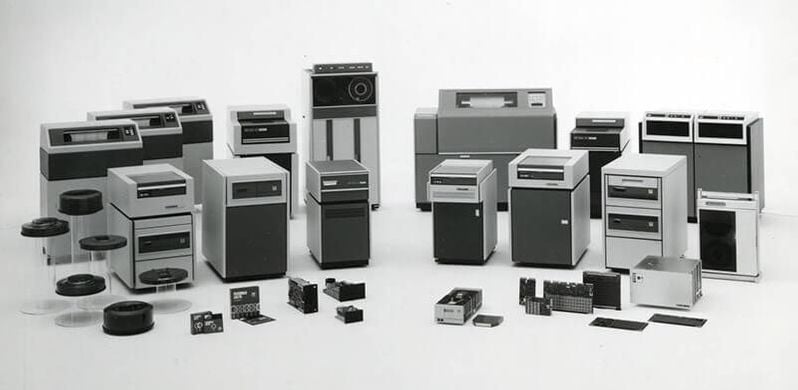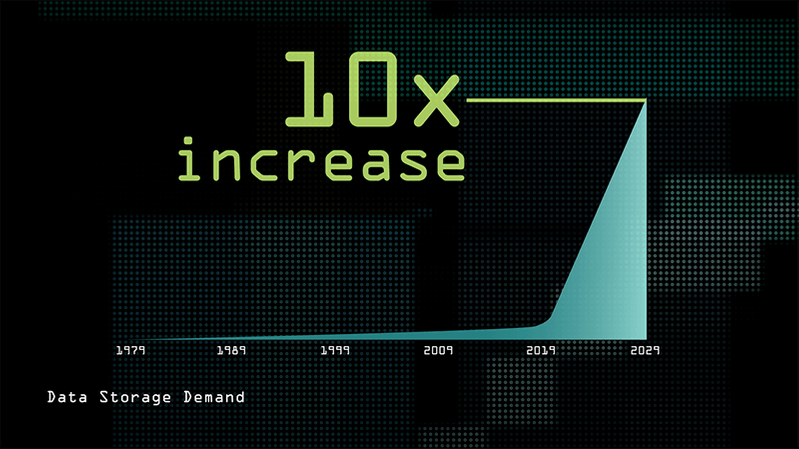Was Minnesota really the Silicon Valley of the Midwest?
Finders keepers, losers weepers - but with a multi-billion-dollar industry.
It's an unfortunate secret to most of the world (including to most Minnesotans) that the North Star State was the epicenter of high-tech computing at a time when California's Bay Area was merely building basic components. The Silicon Valley moniker coincided with a shift in the industry, a shift that would prove crucial to the industry's meteoric rise in California, and to the unstoppable decline here.
Minnesota's dominance in computing began by somewhat of an accident of history (see How MN Became the Land of 10,000 Top-Secret Computer Projects). But regardless of the trigger, the workforce was ready. Thousands of skilled technical workers were readily available, trained by industry leaders such as Honeywell and the University of Minnesota. According to Thomas Misa, author of Digital State, it's no accident that the decline of the streetcar coincided with the rise of high-tech digital manufacturing; highly-skilled workers made the lateral move from sophisticated transport technology to state-of-the-art computing technology.
By the end of the 1950s, four of the world's biggest computing companies called Minnesota home: UNIVAC, Control Data, Honeywell and IBM Rochester. With such a profound concentration of expertise in engineering, manufacturing and programming, Minnesota's place as the computing capitol of the world seemed assured. The 1960s and 1970s only strengthened that claim, or so it seemed. We even gained another industry-leading enterprise: In 1976, famed supercomputer designer Seymour Cray (formerly of UNIVAC and Control Data) named Minneapolis the business headquarters for his newly formed Cray Research (full disclosure: Chippewa Falls, Wis., was the company's spiritual and manufacturing home).

But by the later 1970s, the aforementioned shift slowly began. Hubristically, Control Data kept doing what they'd always done: create massive, extremely expensive mainframes and supercomputers. Thankfully, they'd created an OEM (original equipment manufacturer) business around peripheral storage equipment a decade earlier. What they didn't know was that that OEM business would become their lifeline in a few short years.
The shift was a steady migration away from mainframe-based computing toward desktop computing; away from timesharing on multi-million-dollar supercomputers and toward inexpensive software solutions that could run on inexpensive microcomputers. That's the shift that California-based entrepreneurs saw coming and upon which they capitalized brilliantly. The everyday office worker could use technology, not just large enterprise businesses and world-class research institutes.
Control Data was the hardest hit, at least from this shift specifically. As the most public-facing company, they watched their star dim in the public eye, more frequently in the news for financial losses and layoffs than for technological breakthroughs. The company was sold off in pieces beginning in the late 1980s, most notably that OEM peripheral storage division which still lives on as Seagate Technology. Still, even in its final hours, Control Data managed to get Soviet President Mikhail Gorbachev to come for a whirlwind tour to buy some supercomputers. Now that's salesmanship.
UNIVAC's military focus meant that its star began to dim with the end of the Cold War, leading to layoffs and acquisitions, ultimately ending in the final Lockheed Martin plant closure in 2010. The company's commercial division still lives on as Unisys, but it employs a fraction of its former workforce.
The ever-secretive Honeywell had never been public about its computing work, but the company's military work - particularly cluster bombs and nuclear missile guidance systems - landed it in hot water with anti-war activists in a prolonged protest movement called the Honeywell Project from the late 1960s into the 1990s.
IBM Rochester still lives and breathes, having peaked in the 1990s with a line of midrange computers capped by the astonishingly-profitable AS/400 series. According to IBM, in 1998, they delivered one AS/400 system to a customer every 12 minutes of every workday. IBM Rochester's profits were so big, that in one year, they were the world's number-two computer company, after, of course, parent company, IBM. Their workforce has shrunk considerably since then, but they have many achievements past and present, including being the current "fastest supercomputer" title holders. Learn more about IBM Rochester in Was Minnesota the Inspiration Behind IBM's Nickname "Big Blue"?

In the end, Silicon Valley still sits sprawled across the rolling valleys of the South and East Bay areas of California. Minnesota's juggernauts have shrunk, specialized, morphed and disappeared. But according to technologist Melissa Kjolsing, founder of Recovree, the real power of Minnesota's high-tech legacy is that, these days, everyone is a technology expert. While it once took advanced degrees to build and operate a massive machine, each of us effortlessly navigates a high-tech world every day, carries a supercomputer in our pocket, creates and consumes vast amounts of data with every interaction or tap of the brake pedal. Much of Minnesota's tech scene is on the ground, focused on solving problems with creative solutions. Seagate is one of the top three data storage companies in the world, with an eye toward an mind-blowingly data-hungry future. The Minnesota high-tech story is far from finished.
Besides, who wants all that smog, traffic and absurd housing costs? Nah, we're good right where we are.
Learn all about it in Solid State: Minnesota's High-Tech History, premiering in October 2019.
